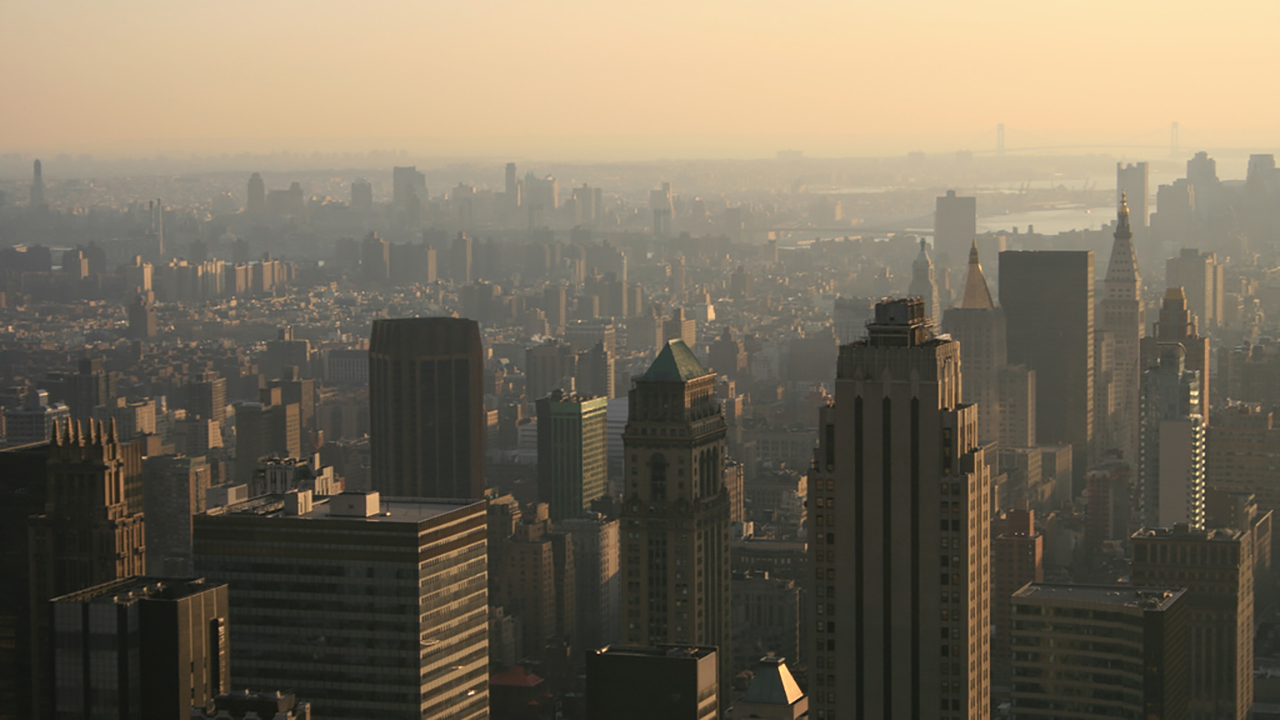You may breathe New York air without any hesitation, but would you eat it? That’s what the folks behind the smog cart, an installation at the New Museum’s Ideas City festival, wanted people to consider when they doled out smog-infused meringue cookies to people on Saturday. The project was meant to increase awareness about the severity and dangers of pollution.
Conceived of by creative think-tank Center for Genomic Gastronomy and Edible Geography blog author Nicola Twilley, the smog cart forces you to think about what city pollution is doing to your body and to your immediate environment. For example — New York’s air is so polluted, especially in low income neighborhoods, that it’s lowering the IQs of kids in those communities. But because most environmental pollution is invisible to the naked eye, it’s easy to dismiss, ignore, or forget.
Behold: The Smog Chamber…precursor chemicals are ‘baked’ under UV lights to simulate smog from many places & times pic.twitter.com/tyWYQECwpA
— CoClimate (@CoClimate) May 25, 2015
They didn’t have a New York-specific smog, but they presented the “London-Style Pea-Souper Smog,” “Atlanta-Style Biogenic Photochemical Smog,” the “Los Angeles in the 1950s Smog,” and a smog from the Central Valley. The Center for Genomic Gastronomy describes the four types in more detail:
These four places and times showcase the four classic “types” that atmospheric scientists use to characterize smogs: London is a sulfur- and particulate-heavy fog, whereas 1950s Los Angeles is a photochemical smog created by the reactions between sunlight, NOx, and partially combusted hydrocarbons. At its worst, Atlanta’s smog is similar in composition to that of Los Angeles, but with the addition of biogenic emissions (an estimated 10 percent of emissions in Atlanta are from a class of chemicals known as terpenes, from organic sources such as pine trees and decaying green matter). Finally, the Central Valley iteration incorporates the ammonia and amines that accompany feedlot agriculture, resulting in a distinctive alkaline smog.
Meringue is a fluffy pastry of egg whites and sugar whipped together. The foamy concoction is mostly air, making it the perfect vehicle for smog. Bldg Blog explains how scientists created the unique cookies:
Smog is formed by a mixture of different pollutants reacting together—a reaction that is usually catalyzed by “baking” the chemical mixture in the sun. To recreate air pollution in the lab, scientists inject precise amounts of different precursor chemicals into a Teflon chamber, where they are cooked under hundreds of UV lights. Different precursor emissions and weather conditions produce different kinds of smog, each with distinct chemical characteristics—and a unique flavor.
Behold: The Smog Chamber…precursor chemicals are ‘baked’ under UV lights to simulate smog from many places & times pic.twitter.com/tyWYQECwpA
— CoClimate (@CoClimate) May 25, 2015
Of course, you’re wondering what they taste like. According to Twilley, they are all “equally disgusting.”
(Photo: urbanfeel)


